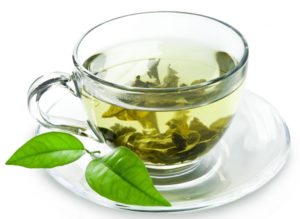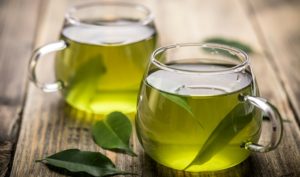Tea has been a popular beverage for centuries. Perhaps you, dear reader, have even taken a few sips (or perhaps inhaled a few lakes’ worth like some I know) of tea. But how much do you know about it? Do you know the origins of the tea you drink? In this brief briefing, I’ll be talking about green tea, the original tea.
The Start of a Sensation
Green tea got its start in Asia, and is probably one of the oldest beverages known to man besides water. It’s so old there’s no definite historical record of when it was discovered or how it was discovered. We can be fairly sure, however, that human beings have been drinking green tea for at least five thousand years. It was the tea – forget chamomile tea, black tea, dandelion tea. Green tea was all there was for a long time, but the leaves of the green tea plant (Camellia sinensis) have been oxidized and experimented with to produce a number of other forms of tea.
In order to brew it, all you do is saturate the green tea plant’s leaves in hot water. It’s literally that simple. No wonder it’s been so popular for centuries!
The Miracle Drink
Green tea contains lots of antioxidants – polyphenols by name – which directly counter what are called free radicals. It has been suggested that these free radicals, the little terrors, cause cancer, heart disease, and even just “getting old” because they modify and damage cells in the body. Green tea’s healing properties are nothing newly discovered. It’s been used as a “miracle cure” for centuries to regulate the body’s processes when they go out-of-control, such as bleeding, fever, and gastrointestinal problems. Science has backed green tea’s healing properties, with research suggesting the beverage is able to remedy some of the following diseases and disorders:
- Artherosclerosis
- High cholesterol
- Liver disease
- Numerous forms of cancer, including breast, prostate, lung, and skin
Beyond this, it also contains stimulants, such as caffeine, which makes the drinker more alert; it also contains L-theanine, which calms the drinker. Strange that a beverage would arouse and soothe someone at the same time! This is why many throughout the years have consumed it in order to sharpen their minds.
Green tea, in spite of its healing properties, does have side effects and can influence the behaviors of multiple medications, including (but certainly not limited to) blood thinners, chemo, birth control pills, and medicines that treat psychological disorders. Those with certain health issues and disorders should avoid drinking green tea. It is a caffeinated drink, after all, and thus should be drunk responsibly.
Those who drink green tea probably shouldn’t drink it with food that contains a lot of iron. Iron counteracts the antioxidants in green tea leaves, dulling its healing properties, according to a lab study by Penn State.
Nevertheless, if drunk responsibly like any herbal drink, green tea is a delicious, relaxing beverage that has been enjoyed for thousands of years by people all over the world.
Green Tea Fun Facts
- A Chinese book, Tea Classic, was written in the 600s A.D. that meticulously describes how green tea should be brewed and presented.
- Green tea begins it all: the other two major kinds of tea are black tea and oolong tea, both derivatives of green tea – the only difference is the level of fermentation, oolong partially fermented and black tea completely fermented.
- Green tea is more popular in the Eastern half of the world. Black tea is more popular in the West.
Want to try some for yourself? We stock a number of loose-leaf green tea products you can try for yourself here.
Want to know even more about green tea? Try out these informative links:
http://umm.edu/health/medical/altmed/herb/green-tea
https://www.revolutiontea.com/green-tea-history



Recent Comments